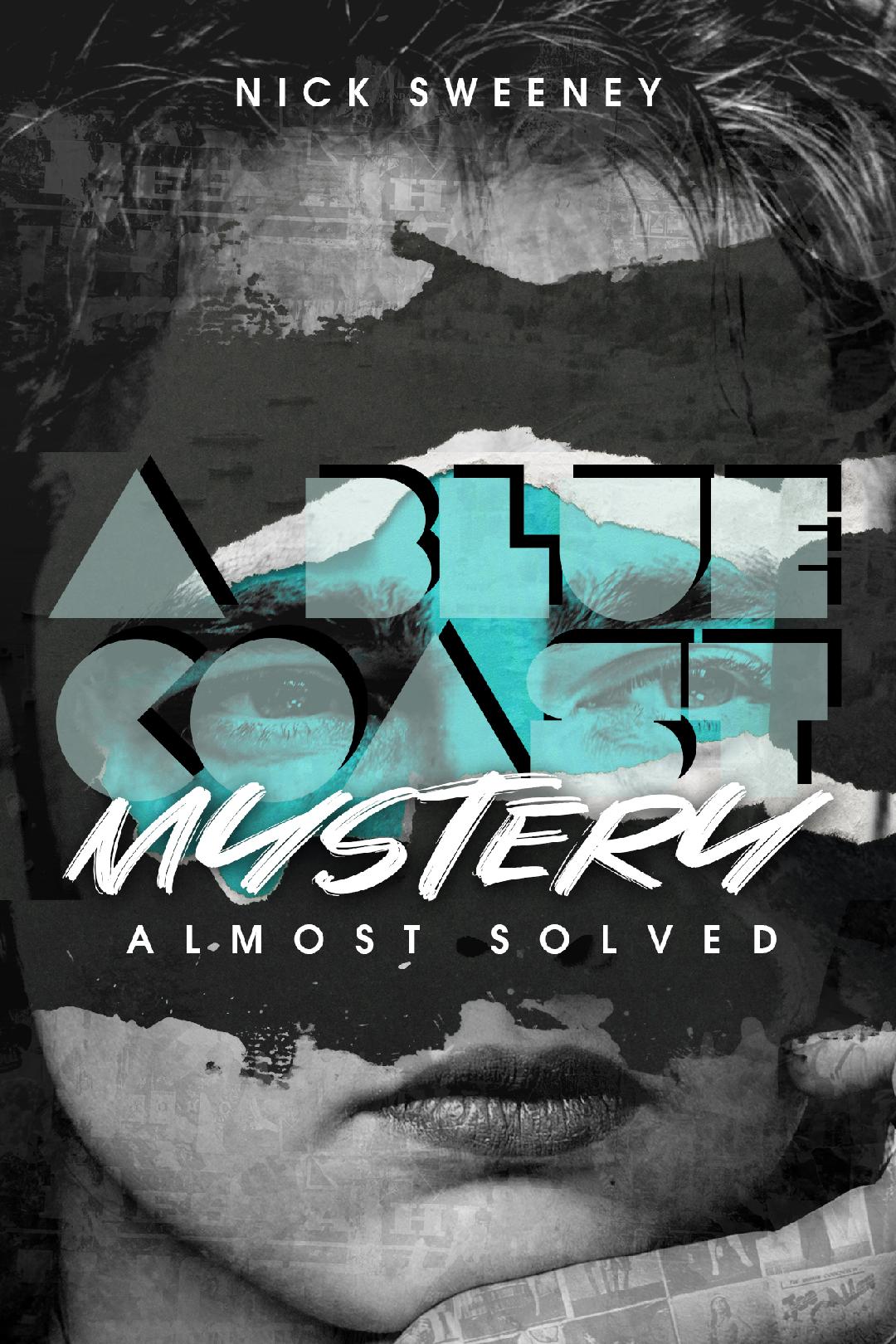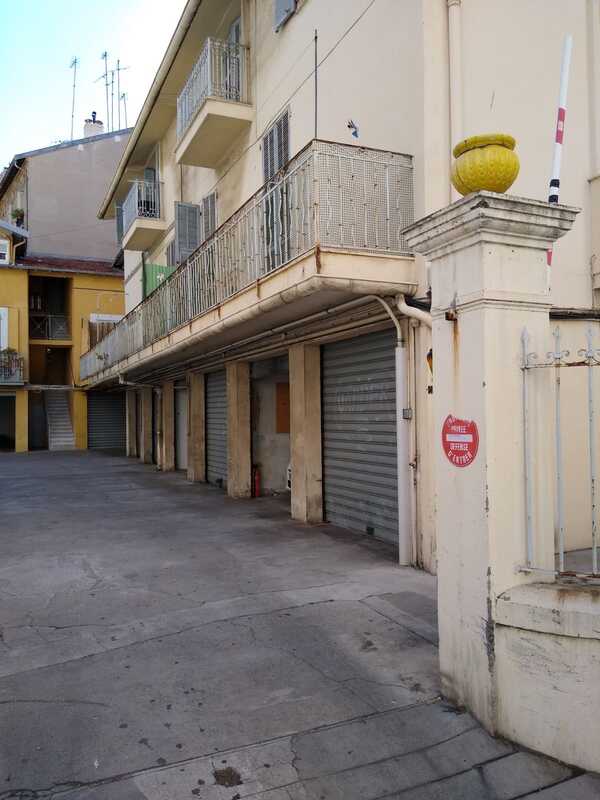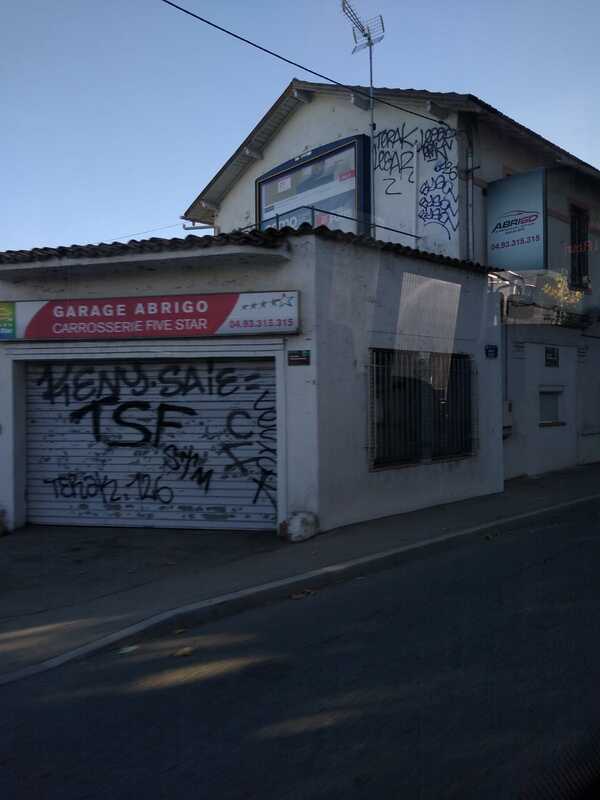A Blue Coast Mystery, Almost Solved
 A Blue Coast Mystery, Almost Solved, the brilliant cover from the design team at Histria Books
A Blue Coast Mystery, Almost Solved, the brilliant cover from the design team at Histria Books
I knew this junkie in the mid-seventies, when I worked in St Giles Hospital in Camberwell, South East London. He was there because of malnutrition, and general neglect, and not treatment for drug abuse, and every time he was discharged I knew it would not be long before he was back. I also knew that, one day, he wouldn’t make it. I knew him as much as you can, or want to, know junkies if you’re not one, and even, I suppose, if you are. His name was Henri, pronounced as in French, though there was nothing French about him, really.
Somewhere between his change of name and sheets, Henri had got himself a countess on the French Riviera – one from a strain of aristocracy left unbeheaded in the Revolution, but a real one, all the same. I never got much of a picture of her, just a stark outline revealing that she was a junkie too – how else could it have been? She introduced Henri to the fringes of the Rolling Stones’ tax-exiled circle from a connection with her dealer, a guy called Jean who had been Marianne Faithfull’s beau, and sometimes still was. “My countess was what they call chic,” Henri said. It was the first time I’d heard that word, and he had to explain it to me. “Part of this sort of… beau monde – beautiful scene,” he translated further. “But up close, it often wasn’t so beautiful.”
They were welcomed in to Keith Richards’ mansion in Villefranche sometimes, by Keith’s vigilant girlfriend, Anita Pallenburg, but at other times shooed out of it, when she wanted to remind everybody that the party, for a time at least, was over. Henri dropped the names, but only as background to his tale; he claimed that his life was uninteresting, even with the Stones in it, and, in any case, a bit of a daze. Perhaps he was that joke come true: if you’d truly lived through the sixties, you wouldn’t be able to remember it. That sixties story had been told so many times by then, and at tedious length, by chroniclers and documentary-makers, using a lot of faces prettier than Henri’s to populate it, and he seemed happy to wash his hands of it.
So begins my novella about the sixties, the Stones in their exile, and about genocide and its survivors, people from places that no longer exist.
It was published in November 2020 by Addison & Highsmith, an imprint of Histria Books, and is available now from Amazon, using this link. You can also get it directly from Histria Books at this link.
Somewhere between his change of name and sheets, Henri had got himself a countess on the French Riviera – one from a strain of aristocracy left unbeheaded in the Revolution, but a real one, all the same. I never got much of a picture of her, just a stark outline revealing that she was a junkie too – how else could it have been? She introduced Henri to the fringes of the Rolling Stones’ tax-exiled circle from a connection with her dealer, a guy called Jean who had been Marianne Faithfull’s beau, and sometimes still was. “My countess was what they call chic,” Henri said. It was the first time I’d heard that word, and he had to explain it to me. “Part of this sort of… beau monde – beautiful scene,” he translated further. “But up close, it often wasn’t so beautiful.”
They were welcomed in to Keith Richards’ mansion in Villefranche sometimes, by Keith’s vigilant girlfriend, Anita Pallenburg, but at other times shooed out of it, when she wanted to remind everybody that the party, for a time at least, was over. Henri dropped the names, but only as background to his tale; he claimed that his life was uninteresting, even with the Stones in it, and, in any case, a bit of a daze. Perhaps he was that joke come true: if you’d truly lived through the sixties, you wouldn’t be able to remember it. That sixties story had been told so many times by then, and at tedious length, by chroniclers and documentary-makers, using a lot of faces prettier than Henri’s to populate it, and he seemed happy to wash his hands of it.
So begins my novella about the sixties, the Stones in their exile, and about genocide and its survivors, people from places that no longer exist.
It was published in November 2020 by Addison & Highsmith, an imprint of Histria Books, and is available now from Amazon, using this link. You can also get it directly from Histria Books at this link.
'A cold-water flat over a garage...'
'The last place they lived in was a two-roomed cold-water apartment in the suburbs of Nice, over a car repair shop, a business run by an old man called Villemont who, it was rumoured, had ‘done well out of the war’. He was wiry, his hands always active, clenched, his pale eyes unflinching, challenging all to dare ask about that period of his life when the Nazis terrorised his country. He was traditional in his ways; he didn’t employ anybody but family, and didn’t encourage his workers to dawdle around the place, wouldn’t let it become a hang out for aimless young men. He believed in a siesta in the summer months, and in knocking off at the advertised times.'
A Blue Coast Mystery, Almost Solved, p14
Find the book here: https://www.amazon.com/Blue.../dp/B08MPLV4PV/ref=sr_1_1...
I was lucky enough to get back to Nice a few times in September 2022, while staying a few miles away at St Paul de Vence, and got a few photos of some of the locations that may have featured in my book - how they look now, of course, with the characters long dead and all that time passed.
A Blue Coast Mystery, Almost Solved, p14
Find the book here: https://www.amazon.com/Blue.../dp/B08MPLV4PV/ref=sr_1_1...
I was lucky enough to get back to Nice a few times in September 2022, while staying a few miles away at St Paul de Vence, and got a few photos of some of the locations that may have featured in my book - how they look now, of course, with the characters long dead and all that time passed.
Reviews
This one is on Goodreads, from Joel Turner:
Nick Sweeney’s tale evokes the untethered, desolated spirt of a cadre of people struggling to exist in a post-war Europe that has cast them adrift.
Our narrator is (was) a 19 year old orderly in a London hospital in the 1970’s mid-who meets (befriends is perhaps stretching it) Henri, a weathered junkie, a recurring patient, who tells him a story of his time in the late 1960’s on the Blue Coast, in a small town outside Nice, living with a wealthy baroness (addict as well), a sometimes visitor to the chateau basement where the Rolling Stones were hanging out and recording. Despite the French name, Henri is English through and through, Camberwell is his patch. There is a story about a borrowed car, belonging to Bill Wyman, or was it David Niven’s? Anyway the car ended up on crashed outside Sean Connery’s place, at least in one version.
The town has a demi-monde around the gaming houses and hotel bars, among whom are a couple, Armen and Luciana – they are playing a small-stakes gambling grift, identifying targets who are charmed by Luciana. Their story’s unfolding is the mystery of the novel, picked up by Henri in the bars and cafes, and at their apartment, over an auto repair shop, with a terrace looking out on the water over a tip/swamp filled with rusted junk, wallowing in a sometimes pool that is possibly septic in nature.
Their story and the weight that it carries in their souls, reaches to Smyrna, site of a deadly fire in a riot that pitted Turks against Armenians, and Chisinau in, “Bessarabia!”, the word flung out by Luciana to an as usual glazed Henri. The couple’s ultimate fate becomes an alarmed obsession to Henri. Now, these hazy years later, their many-filtered tale becomes a view into another world and immense tragedies, told by a career junkie to a London adolescent.
This one is by the late John Maxwell O'Brien, a writer whose work I admire a lot:
Weary of surrealistic, dystopian and apocalyptic literature? How about an old-fashioned artfully told tale reminiscent of Somerset Maugham? Granted, not featuring any of the patrician circles Maugham sometimes made us privy to, but outliers - card sharks on the fringe of society who elicited disdain, or at best toleration from most people they encountered. But, as the adage goes, beware of summary judgment of others; every human being carries an invisible burden we’re totally unaware of.
In masterful fashion and impeccable prose Nick Sweeney unveils the checkered and horrifying past of Armen and Luciana. Each survived a genocidal assault, learning to do whatever it takes to survive...together. Then, one day, they take a stroll on a path that leads them to...well...oblivion. Let Nick Sweeney, a born raconteur, and his intriguing “A Blue Coast Mystery: Almost Solved” accompany you to that point. Then we can discuss what you think happened.
And this one by Judy Adams:
This is a well written and masterfully told story narrated by a London nurse. Unfolded in the story, what's real, what's embellished, is Henri , a drug user who is in and out of the hospital.
And in this story Henri is recalling his life some years ago in his younger days when he visited the South coast of France. This is not your typical travel log and fun in the sun. Henri feeds his addiction and attraction to a cast of outsiders he meets. They are Eastern Europeans leaving genocidal lives behind; they are artful survivors , gambling con artists and out liers. They lead compelling lives and are intensely on the edge of being found by the police. Henri and this group of lovable outsiders form bonds . It's as if the story moves you through an artful and older black and white film made in Europe. At its centre is a touching tale of mutual devotion in the face of treacherous life styles.
Henri returns to London and his contact with the hospital. What will happen now to their present and future? Were their pasts real or largely imagined?
The characters propel the story forward and you can't resist reading it a second time to try to answer questions and put pieces together.
An engrossing read. I highly recommend it.
Nick Sweeney’s tale evokes the untethered, desolated spirt of a cadre of people struggling to exist in a post-war Europe that has cast them adrift.
Our narrator is (was) a 19 year old orderly in a London hospital in the 1970’s mid-who meets (befriends is perhaps stretching it) Henri, a weathered junkie, a recurring patient, who tells him a story of his time in the late 1960’s on the Blue Coast, in a small town outside Nice, living with a wealthy baroness (addict as well), a sometimes visitor to the chateau basement where the Rolling Stones were hanging out and recording. Despite the French name, Henri is English through and through, Camberwell is his patch. There is a story about a borrowed car, belonging to Bill Wyman, or was it David Niven’s? Anyway the car ended up on crashed outside Sean Connery’s place, at least in one version.
The town has a demi-monde around the gaming houses and hotel bars, among whom are a couple, Armen and Luciana – they are playing a small-stakes gambling grift, identifying targets who are charmed by Luciana. Their story’s unfolding is the mystery of the novel, picked up by Henri in the bars and cafes, and at their apartment, over an auto repair shop, with a terrace looking out on the water over a tip/swamp filled with rusted junk, wallowing in a sometimes pool that is possibly septic in nature.
Their story and the weight that it carries in their souls, reaches to Smyrna, site of a deadly fire in a riot that pitted Turks against Armenians, and Chisinau in, “Bessarabia!”, the word flung out by Luciana to an as usual glazed Henri. The couple’s ultimate fate becomes an alarmed obsession to Henri. Now, these hazy years later, their many-filtered tale becomes a view into another world and immense tragedies, told by a career junkie to a London adolescent.
This one is by the late John Maxwell O'Brien, a writer whose work I admire a lot:
Weary of surrealistic, dystopian and apocalyptic literature? How about an old-fashioned artfully told tale reminiscent of Somerset Maugham? Granted, not featuring any of the patrician circles Maugham sometimes made us privy to, but outliers - card sharks on the fringe of society who elicited disdain, or at best toleration from most people they encountered. But, as the adage goes, beware of summary judgment of others; every human being carries an invisible burden we’re totally unaware of.
In masterful fashion and impeccable prose Nick Sweeney unveils the checkered and horrifying past of Armen and Luciana. Each survived a genocidal assault, learning to do whatever it takes to survive...together. Then, one day, they take a stroll on a path that leads them to...well...oblivion. Let Nick Sweeney, a born raconteur, and his intriguing “A Blue Coast Mystery: Almost Solved” accompany you to that point. Then we can discuss what you think happened.
And this one by Judy Adams:
This is a well written and masterfully told story narrated by a London nurse. Unfolded in the story, what's real, what's embellished, is Henri , a drug user who is in and out of the hospital.
And in this story Henri is recalling his life some years ago in his younger days when he visited the South coast of France. This is not your typical travel log and fun in the sun. Henri feeds his addiction and attraction to a cast of outsiders he meets. They are Eastern Europeans leaving genocidal lives behind; they are artful survivors , gambling con artists and out liers. They lead compelling lives and are intensely on the edge of being found by the police. Henri and this group of lovable outsiders form bonds . It's as if the story moves you through an artful and older black and white film made in Europe. At its centre is a touching tale of mutual devotion in the face of treacherous life styles.
Henri returns to London and his contact with the hospital. What will happen now to their present and future? Were their pasts real or largely imagined?
The characters propel the story forward and you can't resist reading it a second time to try to answer questions and put pieces together.
An engrossing read. I highly recommend it.
 The coastguards' yellow planes are a small but essential feature in A Blue Coast Mystery, Almost Solved
The coastguards' yellow planes are a small but essential feature in A Blue Coast Mystery, Almost Solved

